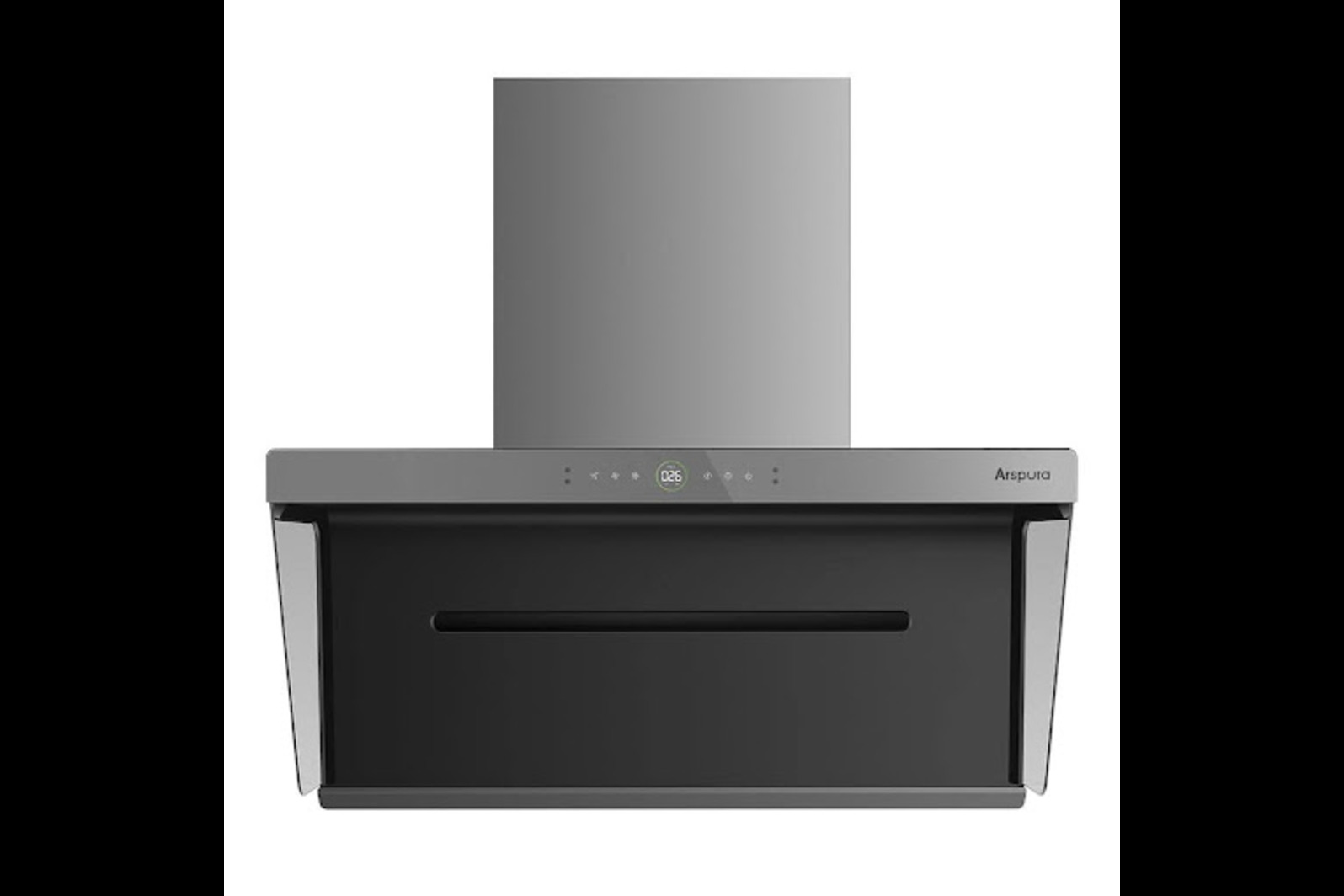The kitchen is often called the heart of the home, but it’s also where smoke, grease, and cooking odors accumulate most intensely. Without proper ventilation, these pollutants can spread throughout your living spaces, affecting both comfort and health. A quality kitchen ventilation fan removes airborne contaminants while they’re still concentrated, preventing them from settling on surfaces or entering your lungs. Whether you’re renovating an existing kitchen or designing a new one, selecting the right ventilation system requires understanding your specific cooking habits, kitchen layout, and performance needs. The market offers numerous options, from sleek under-cabinet models to powerful island hoods, each with distinct advantages. Making an informed choice means considering factors beyond just appearance—airflow capacity, noise levels, energy consumption, and maintenance requirements all play crucial roles in long-term satisfaction. This guide will walk you through the essential considerations for choosing a kitchen ventilation fan that effectively clears the air while complementing your home’s design and fitting within your practical constraints.
Understanding the Importance of Kitchen Ventilation
Why Kitchen Ventilation Matters
Cooking generates more than just delicious meals—it releases a complex mixture of steam, smoke particles, grease droplets, and combustion byproducts into your indoor environment. When these contaminants linger, they create a film on cabinets and countertops that becomes increasingly difficult to remove. Beyond the cleaning hassle, prolonged exposure to cooking fumes can trigger respiratory irritation, especially for those with asthma or allergies. Gas stoves add another layer of concern by producing nitrogen dioxide and carbon monoxide, both of which pose health risks in enclosed spaces. A functional ventilation system captures these pollutants at their source, directing them outside before they disperse throughout your home.
Impact on Air Quality
Indoor air quality deteriorates rapidly during cooking sessions without adequate ventilation. Studies show that frying and high-heat cooking can temporarily elevate indoor particulate matter to levels comparable with polluted outdoor air. These fine particles penetrate deep into lung tissue when inhaled regularly. Moisture from boiling and steaming also contributes to elevated humidity levels, creating conditions favorable for mold growth in hidden areas like behind cabinets or inside walls. An effective ventilation fan maintains balanced humidity while removing airborne particles, preserving both structural integrity and occupant health. The difference becomes particularly noticeable in open-plan homes where kitchen air circulates freely into living areas.
Choosing the Right Type of Ventilation Fan
Range Hoods vs. Chimney Fans
Range hoods mount directly above your cooktop, capturing rising heat and fumes through a canopy that extends over the cooking surface. They work with either ducted systems that vent outdoors or recirculating models that filter and return air indoors. Chimney-style fans feature a vertical stack that channels exhaust upward, offering powerful extraction suited for high-output cooking. Under-cabinet range hoods fit discreetly beneath existing cabinetry, maximizing space efficiency in compact kitchens. Island hoods suspend from the ceiling, requiring careful placement to balance effectiveness with sightlines. Downdraft ventilation systems rise from behind the cooktop when needed, then retract flush with the counter—ideal for maintaining open kitchen views but generally less effective at capturing smoke that naturally rises.
Considering the Size of Your Kitchen
Kitchen volume determines the airflow capacity you’ll need, measured in cubic feet per minute. Calculate your space by multiplying length, width, and ceiling height, then aim for a fan that can exchange the entire air volume at least fifteen times per hour for standard cooking. Smaller kitchens under 100 square feet typically function well with 200-300 CFM units, while larger spaces or those with professional-grade appliances may require 600 CFM or more. The distance between your cooktop and the ventilation fan also matters—standard installation places hoods 24-30 inches above electric ranges and 30-36 inches above gas burners to optimize capture without interfering with cooking activities.
Factors to Consider When Buying a Ventilation Fan
Energy Efficiency
Modern ventilation fans vary dramatically in their power consumption, with some models using three times more electricity than equally effective alternatives. Look for units bearing the Energy Star certification, which indicates they meet strict efficiency standards while delivering adequate performance. Variable speed controls allow you to match fan power to actual cooking intensity rather than running at full capacity constantly. LED lighting integrated into the hood consumes a fraction of the energy that halogen bulbs require while providing superior illumination. Some advanced models include automatic shutoff timers that prevent the fan from running unnecessarily after cooking ends, reducing both energy waste and wear on motor components.
Noise Level
Ventilation fan noise is measured in sones, with one sone roughly equivalent to a quiet refrigerator hum. Units rated below three sones operate quietly enough for conversation during cooking, while those exceeding six sones can dominate the acoustic environment. Higher airflow capacity generally produces more noise, but quality construction with insulated housings and rubber motor mounts significantly reduces sound transmission. Centrifugal blowers tend to run quieter than traditional fans at equivalent CFM ratings. Remote or inline blowers installed in attics or external walls move the noise source away from living spaces entirely, though they require more complex installation and ductwork.
Design and Aesthetics
Your ventilation fan occupies prominent visual real estate in the kitchen, making its appearance as important as its function. Stainless steel finishes complement contemporary and professional-style kitchens while resisting corrosion from cooking moisture. Glass canopy hoods create a lighter visual presence suitable for smaller spaces or minimalist designs. Traditional homes often benefit from decorative wood or copper range hoods that serve as focal points rather than purely utilitarian fixtures. Consider how the hood’s profile affects your sightlines—bulky designs can obstruct views in open kitchens, while low-profile or retractable models preserve visual flow between spaces without sacrificing performance.
Installation and Maintenance Tips
Professional Installation vs. DIY
Installing a kitchen ventilation fan involves electrical connections, ductwork routing, and structural modifications that vary in complexity depending on your home’s configuration. Ducted systems require cutting through exterior walls or roofs to create exhaust pathways, a task that demands precise measurements to prevent air leaks and water infiltration. Professional installers bring specialized tools and knowledge of building codes, ensuring proper venting angles and secure mounting that prevents vibration or detachment over time. DIY installation becomes feasible with ductless models that simply mount beneath cabinets and plug into existing outlets, though even these require careful positioning to achieve optimal capture zones. If your project involves moving gas lines, upgrading electrical circuits beyond basic outlet work, or installing ceiling-mounted island hoods with extensive ductwork, professional expertise prevents costly mistakes and safety hazards.
Regular Cleaning and Maintenance
Grease accumulation represents the primary maintenance challenge for kitchen ventilation systems, with filters requiring cleaning every month under normal cooking conditions or more frequently for heavy use. Metal mesh filters can go directly into dishwashers, while charcoal filters in recirculating units need replacement every three to six months since they cannot be cleaned effectively. Wipe down the hood’s exterior surfaces weekly to prevent grease buildup that hardens into stubborn residue. Inspect ductwork annually for grease deposits that restrict airflow and create fire hazards—professional duct cleaning services use specialized equipment to remove accumulations from areas you cannot reach. Check that the exhaust damper opens freely when the fan operates and closes completely when off to prevent backdrafts during winter months. Many home supply retailers like Arspura offer replacement filters and cleaning supplies specifically designed for ventilation maintenance, making it easier to keep your system running efficiently.
Making the Right Choice for Your Kitchen
Selecting the right kitchen ventilation fan transforms your cooking environment from a source of lingering odors and airborne contaminants into a space where air remains fresh and clean. The decision requires balancing multiple considerations—your kitchen’s dimensions dictate necessary airflow capacity, while your cooking style determines whether you need commercial-grade extraction or moderate ventilation. Energy efficiency affects long-term operating costs, noise levels influence daily comfort, and aesthetic design ensures the unit enhances rather than detracts from your kitchen’s appearance. Installation complexity varies from straightforward plug-and-mount operations to projects requiring professional expertise with ductwork and electrical systems. Once installed, consistent maintenance through regular filter cleaning and periodic inspections preserves performance and prevents safety hazards. The investment in proper ventilation pays dividends through improved indoor air quality, reduced cleaning demands, and protection of your home’s surfaces from grease accumulation. By carefully evaluating your specific needs against available options, you’ll find a ventilation solution that effectively removes cooking byproducts while operating quietly and efficiently for years to come, making every meal preparation a more pleasant experience.


